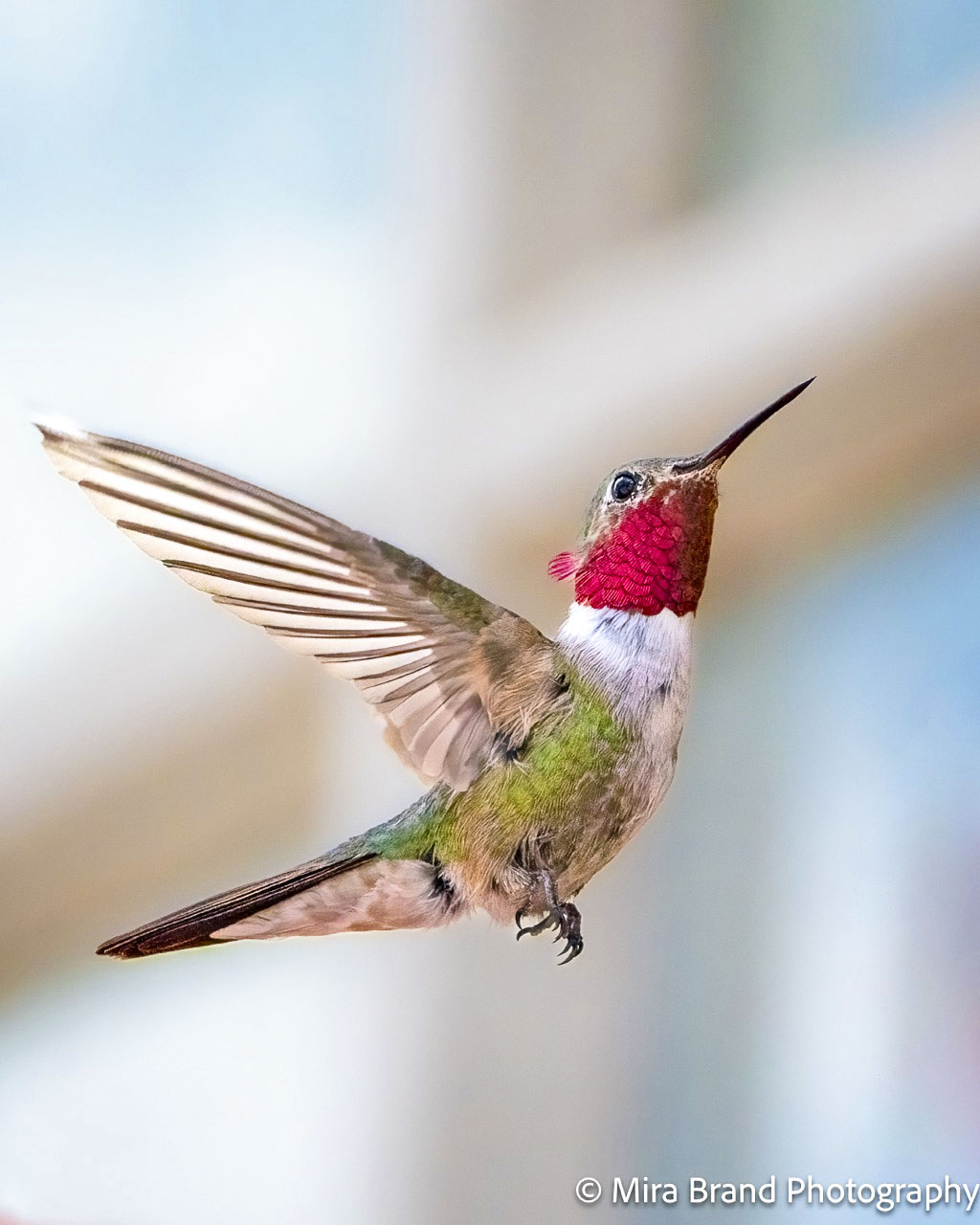Nature’s tiny acrobat: The hummingbird

A broad-tailed hummingbird in Lake City Colorado July, 2023.
With the return of spring, many Coloradans look forward to welcoming back the hummingbirds that flew south for the winter. The hummingbird season in Colorado is mid-April through October.
These fascinating, zippy little creatures start to command attention in mid-April. Four species of hummingbirds can be seen in Colorado. The most common is the broad-tailed hummingbird (pictured right), which migrates in from central Mexico and is iridescent green in color. There is also the rufous hummingbird, the calliope and the black-chinned hummingbird.
Hummingbirds are small, usually between three- to five-inches long with an average weight of less than a quarter of an ounce. They have a very high metabolism and must eat all day long just to survive. They have long narrow beaks used for extracting nectar from tubular flowers.
Feeding every 10-15 minutes, hummingbirds consume about half of their body weight each day, visiting 1,000-2,000 flowers throughout the day. Red is their favorite color and in addition to nectar, their diets consist of small insects, like aphids and spiders.
The hummingbird is the only species of bird that has the ability to hover in place, fly forward, backward, and even upside down, using wings that beat up to 55 times per second. These extremely fast wingbeats make a humming sound which is what gives hummingbirds their name.
To enjoy nature’s tiny acrobats, hanging a hummingbird feeder is a popular way to invite hummingbirds to visit. For the feeder, it is advised to prepare a simple nectar mixture of one part sugar to four parts water. There is no need to boil the water, but using warmer water is recommended to help dissolve the sugar more quickly. Avoid red-dye or pre-mixed commercial nectar; it is harmful to the birds and unnecessary since most of us have sugar and water at hand.
It is important to maintain the feeder, cleaning and changing the solution every five to seven days. When the weather heats up, the sugar water should be changed every two to three days to keep it fresh, so it does not ferment.
Hummingbirds have an innate ability to remember their favorite feeding locales. So, enjoy your hummers today and hopefully you will see them again next year. To learn more about hummingbirds, visit hummingbirdcentral.com.
By Hollen Wheeler; photo courtesy of Mira Brand